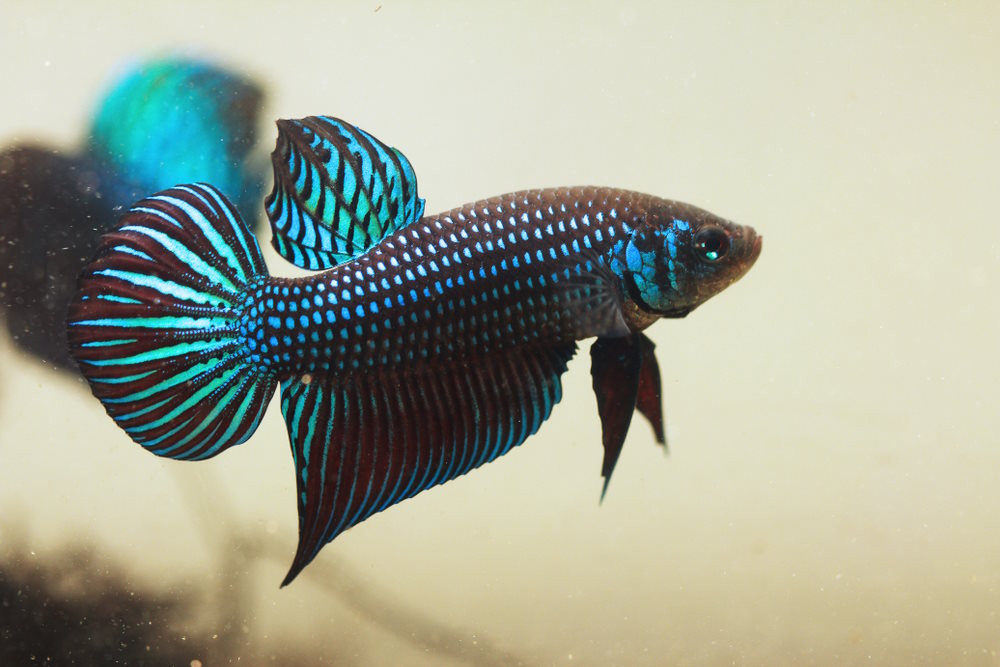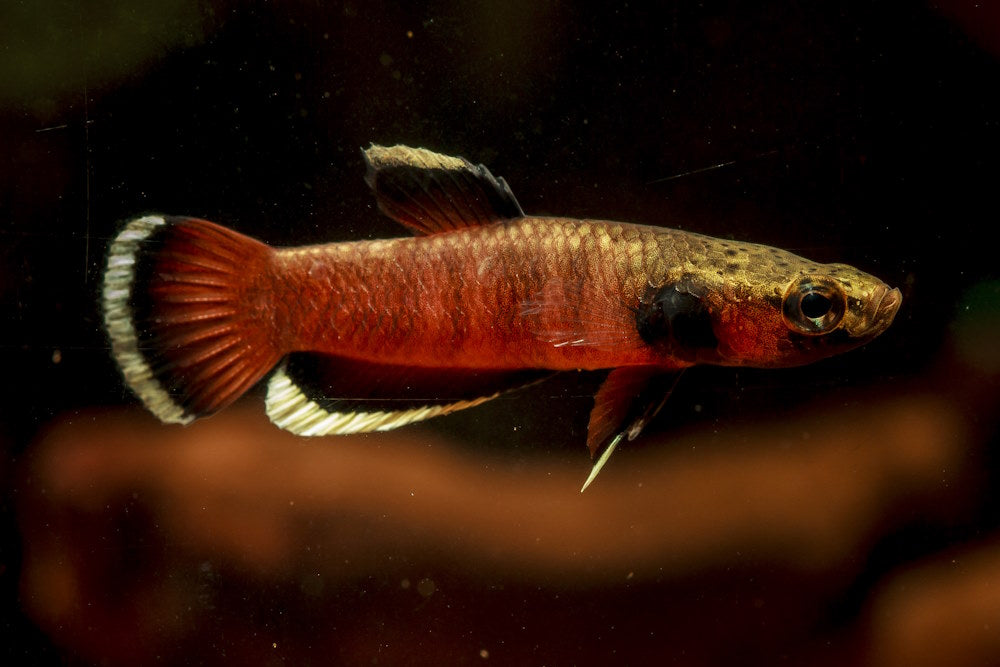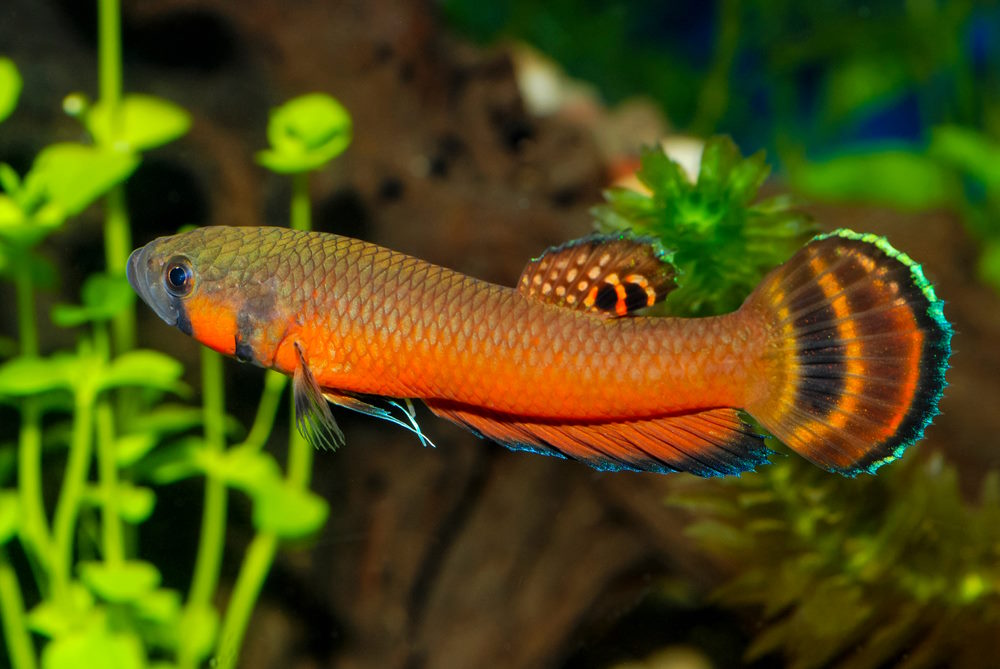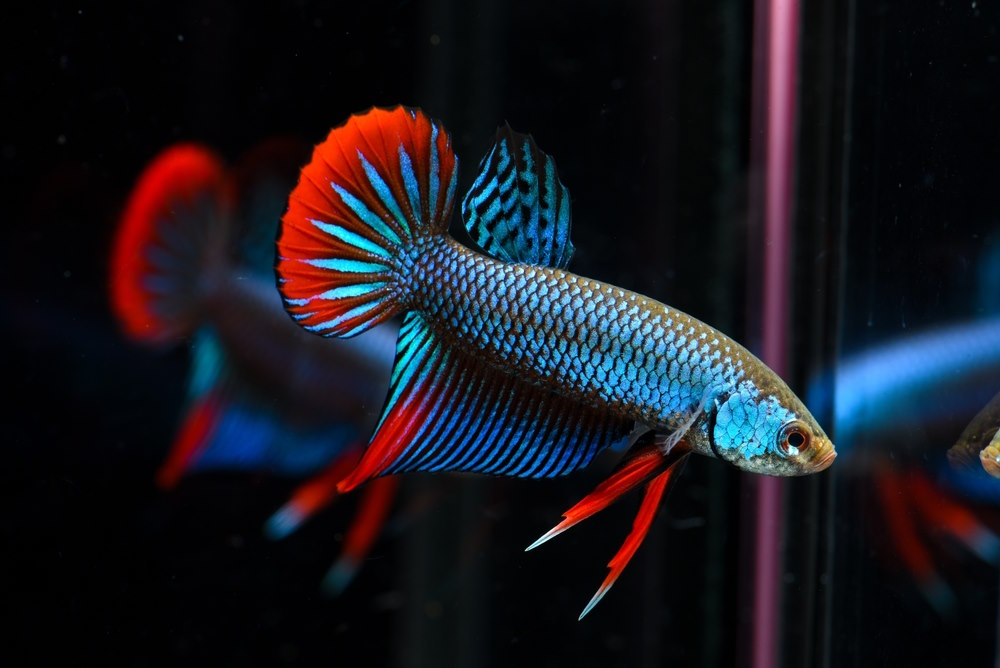5 Amazing Wild Betta Species that You Should Try Breeding
Everyone has heard of Betta splendens, the colorful, flowy-finned betta fish you see in pet stores. But did you know there are several other species in the Betta genus that can be kept in home aquariums? As with B. splendens, most of them come from the vegetation-filled swamps and marshes of tropical countries in Southeast Asia. Because of the low oxygen levels in stagnant waters, these anabantoids have a special labyrinth organ that allows them to swim up to the water surface to gulp air. Therefore, make sure to use a tight-fitting lid for your betta fish tank to prevent them from jumping. (Many breeders also recommend using plastic cling wrap to further increase the humidity of the air they breathe so the babies can properly develop their labyrinth organs.) Finally, they love to eat meaty foods, but to avoid any nutrient deficiencies, make sure to feed them a widely varied diet of frozen bloodworms, freeze-dried brine shrimp, betta pellets, live baby brine shrimp, and more.
1. Betta smaragdina

This species is one of the most beginner-friendly, “wild type” bettas because of their many color variations, hardiness, and ease of breeding. They are also one of the larger betta species on our list that can reach 3 inches (7–8 cm) in length. Their Latin name means “emerald betta” because males have iridescent, blue-green scales in a snakeskin pattern, as well as fins with alternating stripes of blue and red. Females, on the other hand, are predominantly tannish-brown with two horizontal black lines. B. smaragdina is available in different color morphs — such as blue, green, copper, and guitar (e.g., more black striping on the tail).
Because they come from Thailand and other Southeast Asian countries that experience seasonal monsoons, the emerald betta can handle pH from 5.5–7.5, moderately soft to hard water, and a huge range of temperatures. Most sources recommend 72–82°F (22–28°C), but they can go even lower and have even been kept in outdoor mini ponds during the summer.
Like B. splendens, the males can be aggressive, so it’s best to keep them alone in a 5-gallon or bigger aquarium until it’s breeding time. They can also potentially live in a community setting with shyer, peaceful tank mates like neon tetras, pygmy corydoras, and kuhli loaches. To spawn them, condition the male and female for breeding in separate setups by feeding them with lots of frozen bloodworms, brine shrimp, and live foods. Set up a 5- to 10-gallon breeding tank with catappa leaves to grow microfauna for the fry to feed on, and add plenty of floating plants for the male to make his bubble nest next to. Lower the water line to 3–5 inches (8–13 cm) deep, which will make it easier for the male to pick up the eggs and put them in his nest. Introduce the male to the breeding tank and let him get settled first. Then place the female in a tall, clear jar (that rises above the water line) and put the jar in the tank. Once she shows vertical markings and the male has built a bubble nest, you can release the female into the aquarium, and they will usually breed within 1–2 days. They are not super aggressive with each other, but most breeders will remove the female after spawning has occurred. The eggs typically hatch within 2–3 days, and the male will continue to guard his offspring until the fry are freely swimming. Feed them green water, live vinegar eels, and infusoria until they are big enough to eat live baby brine shrimp and micro worms. Some breeders report that they can leave the fry in their father’s care for up to the month, but eventually the male juveniles will need to be jarred (i.e., put in individual jars) once you notice aggression.
2. Betta mahachaiensis

B. mahachaiensis is another bubble-nesting betta that comes from Thailand and gets about 2–2.5 inches (5–6 cm) long. Males are known for their blue-green scales rimmed in dark brown or black and beautiful finnage with stripes that alternate between turquoise and black. Females are brown with two horizontal black stripes on the body and smaller fins that may have some blue coloration. They also have been hybridized to form several color strains like blue, green, and copper. They look very similar to the emerald betta, but B. smaragdina has a snakeskin pattern on its cheeks and more spots on the tail, whereas B. mahachaiensis has a black vertical bar in the middle of its cheek.
What makes B. mahachaiensis so unique is that it lives near the coastal waters of Thailand and therefore can survive in brackish waters. While they are usually kept in freshwater setups, they do like harder water with pH of 7.0–8.5, so dose mineral supplements such as Easy Shrimp and Snail Shell and Seachem Equilibrium if you have soft water. Plus, they are used to living and breeding in sluggish estuaries filled with mangrove palms, so consider using a gentle sponge filter, as well as floating plants and lilies that offer shade. While you can put a single fish in a 5-gallon tank, most people keep a pair in a 10- to 15-gallon, species-only breeding setup. If you have multiple bettas, the males will want to defend their territory, so you’ll need increase the tank size for each male and plant lots of dense foliage to block line of sight.
The breeding setup is very similar to B. smaragdina and B. splendens — create a shallow water environment with floating vegetation or structures for the male to make his nest. Introduce the female in a jar, and wait for the female to display dark banding and for the male to create a bubble nest. Then release the female. The pair will spawn by wrapping their bodies together, the female releases a few eggs, and they both gather the eggs in their mouths and place them in the nest. This process is repeated until there are no more eggs, and then the female can be removed. The father will diligently guard his young, waiting for the eggs to hatch after 1–2 days and for the fry to become free swimming once they absorb their yolk sacs in half a week. Feed them small live foods like vinegar eels and infusoria, and then upgrade them to live baby brine shrimp and micro worms. To make sure the babies don’t go hungry, give them small meals multiple times a day, and do small, frequent water changes to keep the water quality high.
3. Betta albimarginata

The strawberry betta is the first mouthbrooding species on our list, and they are also one of the smallest betta species, staying only 1–1.5 inches (2.5– 3 cm) long. Males have a dark, brick-red body with black spotting on the top of the head and orange cheeks. Their Latin name means “white margin betta,” referring to the high contrast pattern of red, black, and white banding on the fins. They look quite similar to the snakehead betta (B. channoides), except the snakehead betta has no black band on its dorsal fin (only red and white) and its body is a brighter, scarlet red.
The shallow forest streams in Borneo, Indonesia where they are found are covered with fallen leaves and brown tannins, so they prefer mildly acidic, softer waters that range from 75–82°F (24–28°C). Strawberry bettas would love to live in a densely planted tank with catappa leaves and tall obstacles to block line of sight and provide shelter for upcoming fry. Because of their relatively peaceful personalities, males and females can be kept together as a pair, in a group, or in a community setup. Plus, they are quite friendly and come to recognize humans as their primary food providers, although males will hide a lot if they are holding eggs.
When it comes to breeding, the male will display his beautiful colors to the female, and they may circle each other in a courting dance. Once she is ready, the pair embraces to spawn, and the female will pick up the eggs with her mouth. She then spits the eggs out for the male to catch, where he will protect the clutch by holding them in his mouth for 1.5–3 weeks. Adults may eat their own fry, so some breeders like to gently put the male in a fine-mesh breeder box with plants inside as cover and then remove the fry into a grow-out tank. (Be careful about startling the male because he may swallow the eggs if he feels threatened.) Once the babies hatch and become free swimming, the male will gradually release them, and you can feed the newborns tiny foods like live vinegar eels and smaller-sized baby brine shrimp that are harvested earlier than usual. The male cannot eat while he is holding eggs, so leave him in the breeder net or a separate tank to help him regain the weight that he lost. Male juveniles usually do not have to be jarred, but if the tank becomes overstocked with offspring, remove some of the juveniles as they get older to minimize any territorial spats.
4. Betta macrostoma

The Brunei Beauty or spotfin betta is another large betta species that can reach up to 3.5–4 inches (9–10 cm). The male has a long, tubular body that is orange-brownish in color and reddish cheeks with a vertical black stripe down the middle. The dorsal fin has a prominent black spot or two on it, and the gorgeous tail features black, red, and yellow-orange striping with a thin edge of electric blue. The female is mostly tan and often has a couple of horizontal stripes running down the length of her body.
This endangered species comes from the island of Borneo, where they live in highly acidic, shaded forest streams that range from pH of 4–6. That being said, captive-bred specimens can be kept in pH of 6–7 and temperatures between 74–80°F (23–27°C). To simulate their native conditions, dim the lighting, tint the water with catappa leaves, and add floating plants and lily pads to provide extra shade. Unlike some betta species, they can handle actually faster streams, but most people use a sponge filter to protect any potential fry. B. macrostoma can live in a species-only setup or a community aquarium with peaceful, similar-sized tank mates, but since their Latin name translates into “big mouth,” avoid keeping them with dwarf shrimp and other nano species that they can swallow.
For breeding purposes, you can start with a 10- to 20-gallon tank for a pair or use a bigger aquarium for a group setup. Add lots of botanicals and tannins to help lower the pH and provide shelter for the male while he’s holding eggs. The males like to open their impressive jaws to display in front of rival males or to court perspective females. When a pair is ready to mate, they embrace each other, and the female releases her eggs. They can both pick up the dropped eggs, but the female will pass them to the male to hold in his mouth for 20–30 days. During this time, the male will spend all of his time hiding, so consider covering the tank walls to lower stress so he won’t swallow the eggs. The father releases the fry once they are free swimming, and they can usually take live baby brine shrimp and microworms immediately as food. After the birthing, keep the male separated from any females so that he can eat food to regain his weight and avoid immediately breeding again.
5. Betta imbellis

The crescent betta is one of the smaller species that grows to 2–2.5 inches (5–6 cm). There are many available color variants, but males tend to have a blue-green body with red accents on the fins and a bright red, crescent edging on the tail. The females are brown with some faded red and blue tints on the fins. Their Latin name stands for “peaceful betta,” but the males can be quite aggressive and will fight, especially during breeding seasons. To play it safe, keep one betta alone in a 5-gallon tank, a pair in a 10-gallon tank, or a small group with only one male in 20 gallons or more. They can also live in a bigger community tank with other peaceful, betta-safe tank mates.
B. imbellis are found all over Southeast Asia in slow-moving swamps and rice paddy fields, so set up a densely planted tank with dim lighting. You can add catappa leaves to tint the water and provide extra food for the fry, but low pH is not as critical, especially if the fish are captive bred. Like B. smaragdina, they can live in a wide range of pH levels from 5.5–7.5, soft to moderate hardness, and 72–82°F (22–28°C). Make sure to add a tight-fitting lid with all the holes covered, and provide gentle flow using an air stone or sponge filter. If breeding aggression is a problem, some hobbyists recommend creating more surface agitation in the water to break up any bubble nests.
To set up a breeding tank, lower the water level to only a few inches so the male can quickly bring the eggs into his nest and the fry don’t have to swim as far to breathe from the surface. Using a tank with a bare bottom or sand substrate may also help the male easily find any eggs that drop. Floating plants and lily leaves can serve as anchors for the male to build his nest, but some breeders like to use a piece of bubble wrap that is taped to the side of the glass. Place the male in the breeding tank first, and then introduce the female in a tall, glass jar so that they can see each other. When the male makes a bubble nest and female shows her breeding stripes (or dark, vertical banding), the pair is ready. After releasing the female, it may take 1–3 days for them to actually spawn, so make sure there are plenty of obstacles that block line of sight so that the female can hide from the territorial male if needed. The pair will embrace, the male will pick up the fertilized eggs to place in his bubble nest, and they will repeat the mating process until she has no more eggs to give. Afterwards, the eggs will hatch in 1–2 days and the fry will stay in the bubble nest for a few more days as they absorb their yolk sac, while the dad guards them until they are free swimming. Supposedly, the adults don’t eat their fry, but you can remove the male after his duties are done. As with all betta fry, feed them tiny live foods like vinegar eels and eventually baby brine shrimp. Make sure to give them multiple, small meals each day, and do multiple, small water changes each week.
If you enjoyed our top 5 wild betta species, don’t forget to check out the other lists of all our favorite species, such as our top 10 livebearers, top 10 pufferfish, and more.




